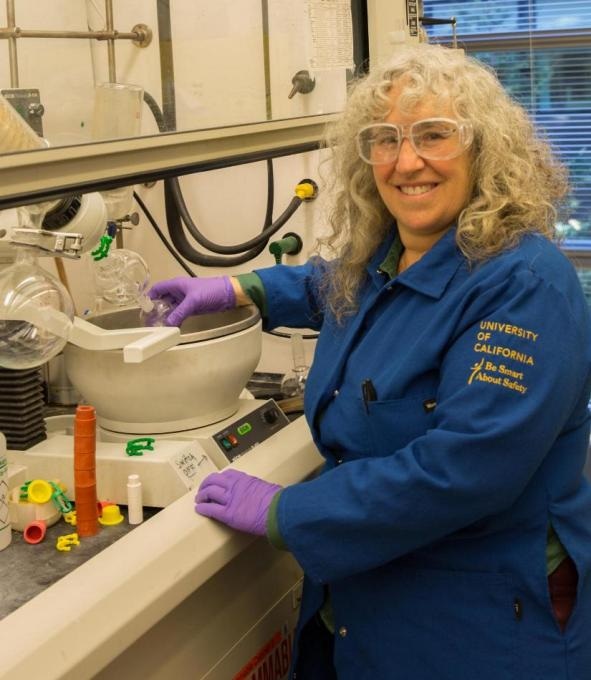Nov 2 2018
UC Santa Cruz researchers have come up with safer substitutes to the phthalate plasticizers, which are traditionally used for improving the longevity, flexibility, and suppleness of plastics.
 Rebecca Braslau’s lab has been working to develop nonmigratory plasticizers that can’t leach out of plastics and contaminate food and the environment. (credit: Carolyn Lagattuta)
Rebecca Braslau’s lab has been working to develop nonmigratory plasticizers that can’t leach out of plastics and contaminate food and the environment. (credit: Carolyn Lagattuta)
One inherent issue with phthalates is that they have a tendency to leach out of plastics and enter into water, food, and the environment, and there is growing evidence which shows that exposure to phthalates can cause various health problems.
A research team, headed by Rebecca Braslau, professor of chemistry and biochemistry at UC Santa Cruz, tackled this issue by creating chemicals that have been found to be effective as plasticizers for polyvinyl chloride (PVC), and since these chemicals are chemically adhered to the polymer chain, they cannot leach out of PVC products. The researchers detailed their findings in a paper reported in the Journal of Polymer Science (online September 26 and in the November 1 print issue).
While phthalates are utilized in many different products, they are most extensively used as plasticizers for PVC—one of the most standard types of plastic. PVC is the third most common plastic polymer after polypropylene and polyethylene and is used for making products, for example, furniture, clothing, building materials, food packaging, garden hoses, medical devices, and blood-storage containers.
Braslau’s group has been exploring to make “nonmigratory” plasticizers that adhere to the PVC polymer through a chemical bond and cannot leach out of the plastic. She elaborated that historically, phthalates are combined with finely ground PVC and then “melted together” instead of being bonded.
“Unlike phthalates, our nonmigratory plasticizers physically can’t leach out,” said Braslau.
At Braslau’s lab, a number of viable nonmigratory plasticizers have been produced, including two versions called the “tadpole” and the “frog” due to their chemical structures. Braslau added that the “tadpole” is especially promising because it is the most effective of the plasticizing strategies studied and can be produced much more easily than the “frog” plasticizer.
“Fewer steps and fewer chemicals are involved in its synthesis. Importantly, it should be scalable for industrial use,” she stated.
Growing concerns over the possible health risks of phthalates spurred the study into phthalate alternatives. Some phthalates are believed to be endocrine disruptors, because either they or their metabolites disrupt the hormone system of the body. Although the majority of the studies demonstrating the toxic effects of phthalates have been performed in laboratory animals, some human studies have also come across links between phthalate exposure and adverse developmental and reproductive effects.
While it is not clear how phthalates pose a risk to human health and at what extent of exposure, scientists are more worried about the possible effects of this chemical on children and infants. Both the United States and the European Union have imposed bans on the use of phthalates in childcare products and children’s toys.
Yet, despite this initiative, phthalates are extensively being used in other differed products. These chemicals are found in children’s rain gear, shower curtains, vinyl flooring, and siding, and also in personal care products, for example, cosmetics and shampoos. As a consequence, phthalates are now extensively dispersed across the environment, with the majority of people having detectable amounts of this chemical in their blood.
“They are everywhere we touch,” said Braslau.
Nevertheless, Braslau and her team believe that the plastics industry will eventually adopt their safer nonmigratory plasticizers.
“The potential for this is real,” she stated, though she conceded that attempting to change the plastics sector is like “trying to turn the Queen Mary.”
Aside from Braslau, the paper’s authors include first author Chad Higa, who received his PhD at UC Santa Cruz in 2018 and is currently a postdoctoral researcher at the University of Hawaii; Rudy Wojtecki and Andy Tek, both at the IBM Almaden Research Center in San Jose. The National Science Foundation funded the study.